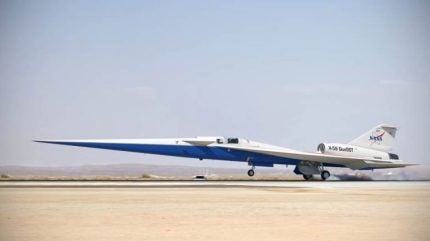
Nasa’s X-59 Quiet SuperSonic Technology (QueSST) aircraft has entered the final assembly phase following the Key Decision Point-D (KDP-D) management review.
The final assembly and integration of the plane’s systems, including the cockpit eXternal Visibility System, is scheduled for later next year.
KDP-D is the final programmatic barrier for the X-59 QueSST aircraft and was conducted by senior managers at Nasa Headquarters in Washington.
The officials will meet again in later next year to clear the plane’s first flight scheduled to take place in 2021.
The X-59 will be Nasa’s first large-scale piloted X-plane in more than three decades.
Nasa Aeronautics associate administrator Bob Pearce said: “With the completion of KDP-D, we’ve shown the project is on schedule, it’s well-planned and on track. We have everything in place to continue this historic research mission for the nation’s air-travelling public.”
Lockheed Martin is building the aircraft at its Aeronautics Company’s Skunk Works factory in Palmdale, California, as part of a $247.5m cost-plus-incentive-fee contract.
The aircraft manufacturer has established separate areas to construct the plane’s main fuselage, wing and empennage.
The development and construction of the X-59 QueSST is part of the Low Boom Flight Demonstrator project, which falls under Nasa’s Integrated Aviation Systems Program.
X-59 QueSST is an experimental piloted aircraft designed to fly faster than sound without producing the loudness of a sonic boom.
The mission of the aircraft is to gather data when flying over select US communities, which will help write rules to enable commercial supersonic air travel overland.


